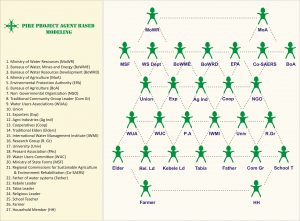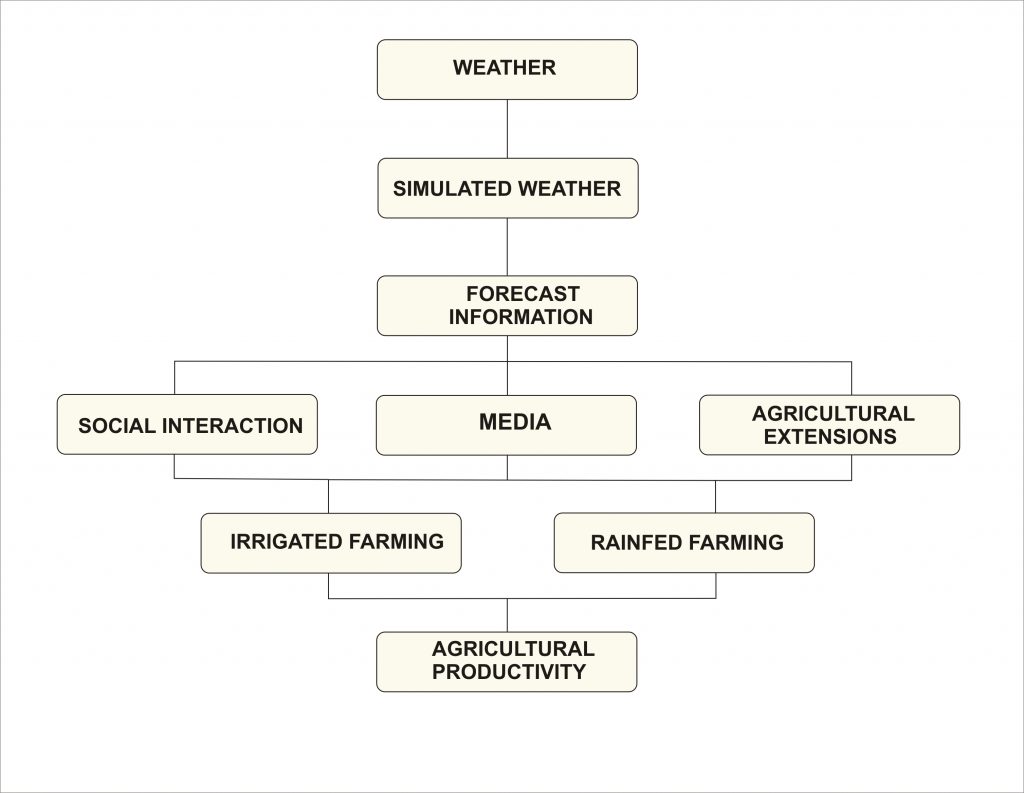Background
Seasonal precipitation forecasts in the Blue Nile Basin have the potential to help Ethiopian farmers adapt to changing hydroclimatological conditions. However, substantial uncertainty remains about how to most effectively communicate the forecasts to maximize the uptake and exchange of information by the farmers. Moreover, it is unclear what impacts the forecasts will have on agricultural productivity.
Objective
The objective of this work is to use agent-based modeling (ABM) to link physical and social systems for a broader view of how uptake, assimilation and exchange of information from scientists to water managers, smallholder farmers and other stakeholders may occur, and to identify patterns and barriers to adoption of forecast information. Moreover, the ABM will be coupled with agricultural productivity models to predict agricultural yields based on different climatological conditions and forecasts. The resulting yields can then be fed back into the ABM input and will influence farmer decisions in subsequent model years.
Methods
ABM has been shown to be an effective tool for studying coupled human/engineered/ environmental complex systems. During the summer of 2018, we will conduct in-depth focus groups and surveys to study stakeholder behavior, how they are likely to receive and transmit hydroclimatological information and what actions they will take in response to the information. Using this information we will develop the ABM to understand the flow of information, the likelihood of acceptance and transmission to other agents, and factors influencing these processes. The ABM will help to identify barriers to information uptake and exchange, rank each factor's importance, see how forecast-based advice can influence outcomes and enable us to generate testable hypotheses. These hypotheses will be tested periodically in the 2nd and 3rd years to refine the model and improve uptake of the advice. This iterative approach will enable us to verify and validate the model. The fully validated model will be used to test the ability of the forecasting tools to increase the resiliency of Ethiopian communities to water stresses and increase agricultural productivity.

Fig 1. Nature of information exchange among the agents

Fig 2. Modeling framework
Research Team
Jonathan Mellor, Assistant Professor of Civil and Environmental Engineering, University of Connecticut.
Sardorbek Musayev, Graduate Student, Civil and Environmental Engineering, University of Connecticut.